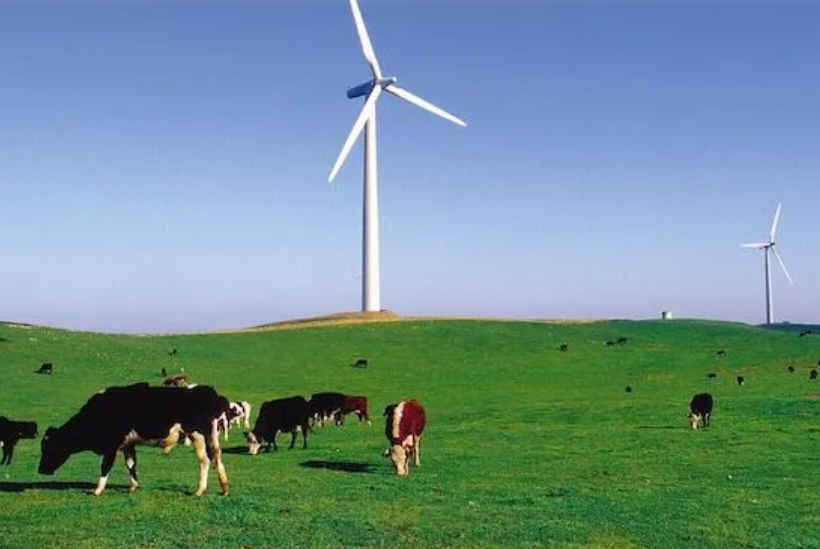
The closure of Australia’s first commercial wind farm, Codrington Wind Farm in Western Victoria, has exposed the financial and environmental shortcomings of the renewable energy sector, critics say.
Despite being heralded as the future of “clean energy”, the site’s decommissioning highlights the economic unviability of wind farms and the environmental costs that often go unspoken.
Pacific Blue, the company that operates Codrington, confirmed that repowering the 18.2 MW facility is simply too expensive. The wind farm, which began operation in 2001, will cease generating power in 2027, and the company has no plans to replace the aging turbines with newer models.
“At this stage, Pacific Blue is not pursuing a repowering option for Codrington, as the site’s grid connection would require significant upgrades and today’s turbine siting requirements would preclude the installation of latest generation turbines, resulting in a non-financially viable project,” a spokesperson stated.
The decision to decommission rather than repower Codrington underscores the economic fragility of wind power. In its two decades of operation, the returns on investment have been less than the total expenditure—raising serious questions about the long-term viability of wind energy projects.
The company’s decision also highlights the costly reality of wind farm infrastructure, but says it is committed to the “responsible decommissioning” of Codrington.
Modern turbines are significantly larger and more powerful than their predecessors, making upgrades logistically and financially challenging. New turbines require new foundations, different spacing, and updated grid connections—essentially forcing developers to start from scratch.
While wind energy is often touted as a clean alternative to fossil fuels, Codrington’s closure also exposes the industry’s environmental pitfalls. Unlike other forms of energy infrastructure, wind turbines are notoriously difficult to recycle.
The turbine blades, made from composite materials, have no viable recycling solution and will be sent to a landfill.
The metal components will be scrapped, but the sheer volume of materials involved in decommissioning poses a significant environmental burden.
The 20,000-tonne concrete foundations will remain buried in the farmland, permanently altering the landscape and limiting future land use.
The same fate likely awaits the neighbouring Yambuk Wind Farm, which began operation in 2007 and is approaching the end of its operational life. Pacific Blue has not confirmed its plans for Yambuk at this stage.
Codrington’s closure is a stark reminder that wind energy is not the cost-free, green solution that its advocates claim. As older wind farms begin reaching the end of their lifespans, more decommissioning projects will follow—raising concerns about financial sustainability, environmental impact, and long-term energy security.
Despite government subsidies and strong political backing, the wind energy sector faces a reckoning. When the cost of replacing turbines is too high and decommissioning is the cheaper option, it signals a fundamental flaw in the economic model of renewable energy.
This should be a very clear warning to those tied up with new wind projects. It’s not financially viable to keep this project going. Why are we planing to keep building them?? Hosts of “farmer owned” projects – I hope you have some $ for decommissioning https://t.co/Ih6odROOqc
— Bec Marshall (@becsta1984) February 20, 2025
@ShackelWill Thirty acres of discarded wind turbine blades outside of Sweetwater Texas says otherwise. These are destined for landfill, like the decommissioned turbines in Australia. Let’s see what happens to the turbines from Codrington VIC
Source: https://t.co/zONNgcehTr pic.twitter.com/8fQmcmn82b
— Neil Smith (@neils888) February 17, 2025
Wind farms are a joke, they kill millions of birds a year and are not very effective.
And only got off the ground because of huge upfront government (taxpayer ) subsidies paid. If it wasn’t for these subsidies, this scam would never have been viable. No doubt the taxpayer will end up paying for decommissioning and disposal as well. The foreign corporations who ‘contracted’ with government, manufactured and installed these ‘monstrosities’ were the only winners here, as usual.
Yep, but the winners were/are the very bullshiticians who no doubt got kick backs in one form or another from these corporations.
Ya know, corporations trade with corporations, and NZ is a corporation.
https://www.youtube.com/@billturner7554/videos
According to you, they are at killing birds.